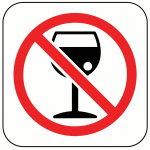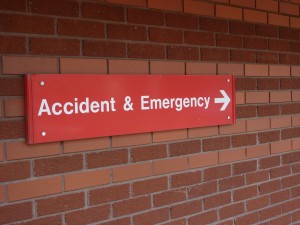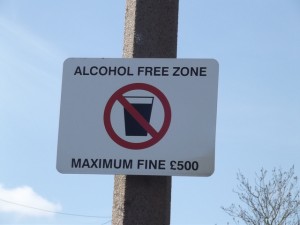
The hazardous and harmful use of alcohol is a major public health issue. It is estimated that around nine million adults in England drink to potentially harmful levels, and the cost of alcohol misuse to the NHS is around £3.5 billion every year. A further £11 billion per year is spent as a result of alcohol-related crime and £7.3 billion due to lost productivity.
One key strategy concerning alcohol price and availability is licensing, which modifies our drinking environment. Evidence indicates that there is an association between the number of alcohol outlets in neighbourhoods and alcohol-related hospital admissions; therefore restricting the number of alcohol outlets is a potential avenue for reducing alcohol-related harm.
Local authorities have the power to limit both on- and off-trade alcohol outlets. They can refuse individual license applications and they can designate cumulative impact zones (CIZs) to control new alcohol outlets in places where the addition of more would challenge crime prevention and public safety, create a public nuisance or expose children to harm.
In a recent study published in the Journal of Epidemiology and Community Health, authors evaluate whether differences in CIZ implementation and licensing scrutiny by local councils has an impact on population health.

Estimates suggest that alcohol misuse costs the NHS £3.5 billion a year.
Methods
Alcohol licensing data was obtained for 326 lower tier local authorities (LTLAs) in England for the years 2007/2008 and 2011/2012, data from 319 of these local authorities was used in the analyses.
A ‘cumulative licensing intensity score’was developed for each LTLA, this score was divided into four categories; no activity (passive) and 3 levels of intensity (low, medium, high).
Authors looked at the association of licensing intensity with quarterly hospital admission data (standardised for age) with a primary alcohol-related admission for the period 2009-2015. Primary alcohol related admissions are conditions wholly attributable to alcohol, such as alcohol liver disease, ethanol poisoning, malignant neoplasms of the oesophagus and hypertensive diseases. They also controlled for influential factors such as deprivation data, alcohol-related crime rates and population size.
Results
The cumulative licensing intensity score was classified as:
- Inactive in 43% of authorities
- Low intensity in 21% of authorities
- Medium or high in 35% of authorities
Hierarchical growth modelling was used to analyse the data. The inclusion of baseline deprivation, population size and alcohol related crimes in the model explained around 50% of the baseline variability in admission rates between LTLAs. There was no evidence that they could explain changes beyond this over the 2009-2015 period.
The main finding was that the intensity of alcohol policies in LTLAs was associated with larger reductions in alcohol-related hospital admissions. This change in hospital admission rates in the areas with the highest intensity policies was -2% (95% CI -3% to -2%) annually (p=0.05). This is equal to a 5% reduction or 8 fewer alcohol-related admissions per 100,000 people in 2015, compared to if these authorities did not have active policies in place.
In authorities with a medium intensity policy, a non-significant decrease in admission rates of 0.6% annually was found. This is equal to a doubling of reduction in admission rates compared with authorities that were non-active.

Local areas with the most intensive licensing policies saw the biggest reductions in alcohol-related hospital admissions.
Discussion
The results from this study indicate that there is a greater reduction in alcohol-related hospital admissions in local government areas that have more intensive alcohol licensing policies. Active licensing policies are defined by authors as those with CIZs present and more intense scrutiny of license applications.
It is concluded that:
The more intensely alcohol licensing policies are implemented in a local area, the stronger their effect on reduction in alcohol-related hospital admissions.
Strengths and limitations
- More active policies are often introduced in areas with higher levels of harm. Authors adjusted for this in the models by taking into account confounding variables such as baseline deprivation, population size and alcohol-related crime data.
- The association does not prove causality. For example, authors emphasise that the drop in admissions could be due to that area adopting other alcohol policies such as late night levies or policies aimed specifically at reducing health harms, such as screening and brief interventions.
- Authors note that data on accident and emergency department visits was not included in the statistics used. Future research on the impact of licensing on acute societal impacts may help to further explain the data. For example, there may be a larger effect on acute alcohol poisoning or crime, as local policies are often aimed at reducing immediate societal impacts.
Conclusions
This study is the first to demonstrate that in areas with more active licensing policies, there is a greater reduction in alcohol-related hospital admissions. Although conclusions about cause and effect can’t be drawn, the association between the two suggests a population level benefit of policies that restrict licensing.

Should this research inspire Directors of Public Health to consider more active licensing policies?
Links
Primary paper
de Vocht F, Heron J, Angus C, Brennan A, Mooney J, Lock K. et al (2015) Measurable effects of local alcohol licensing policies on population health in England. J Epidemiol Community Health. doi: 10.1136/jech-2015-206040 [Abstract]
Other references
Health Committee. Written evidence from the Department of Health (GAS 01). UK Parliament, 2012. http://www.publications.parliament.uk/pa/cm201213/cmselect/cmhealth/132/132we02.htm#footnote_1 (accessed 26 Aug 2015). http://www.webcitation.org/6b4MqIXYL
PHE. User guide: Local Alcohol Profiles for England 2014 London 2014:23. http://www.lape.org.uk/downloads/LAPE%20User%20Guide_Final.pdf (accessed 26 Aug 2015). http://www.webcitation.org/6b4Nlogai
Public Health England. Alcohol treatment in England 2013-14. London: Public Health England; 2014. http://www.nta.nhs.uk/uploads/adult-alcohol-statistics-2013-14-commentary.pdf
Richardson EA, Hill SE, Mitchell R, et al. Is local alcohol outlet density related to alcohol-related morbidity and mortality in Scottish cities? Health Place. 2015;33:172-80.

Local alcohol licensing policies associated with reduction in alcohol-related… https://t.co/EX1eAQ8QEQ #MentalHealth https://t.co/2jX3mu1Oqd
@Mental_Elf agree a single strategy is unlikely to reduce adm. but public health need to match the alcohol industry with multiple strategies
Today @tash_c135 on the measurable effects of local alcohol licensing policies on population health in England https://t.co/R6ULWM71fE
…evidence that alcohol-related hospital admissions reduce more when more intense licence policy activity @Mental_Elf @tash_c135
Directors of Public Health! Does this new evidence make you consider more active alcohol licensing policies? https://t.co/R6ULWM71fE
@Mental_Elf to what extent is the problem just moving from areas of high regulation to areas of low reg?
Local alcohol licensing policies associated with reduction in alcohol-related hospital admissions https://t.co/WzBo6FMHoL via @sharethis
Local #alcohol #licensing policies associated with reduction in alcohol-related hospital admissions https://t.co/LU76QiLXzX #publichealth
Estimates suggest that alcohol misuse costs the NHS £3.5 billion a year https://t.co/R6ULWM71fE
@Mental_Elf thanks for sharing The Mental Elf, have a great Thursday :) (Want your FREE Tweet? >> https://t.co/J0mnICxCxE)
RT @lacanlune: Local authorities implementing licensing policies can reduce #alcohol-related admissions. https://t.co/gYtjRo65yO https://t.…
Local alcohol licensing policies associated with reduction in alcohol-related hospital admissions https://t.co/GC6Brh71ut via @sharethis
Don’t miss: Local alcohol licensing policies associated with reduction in alcohol-related hospital admissions https://t.co/R6ULWM71fE
@tash_c135 with an excellent @Mental_Elf blog on alcohol licensing policies and alcohol related hospital admissions https://t.co/LqpZQcX4we
[…] Local alcohol licensing policies associated with reduction in alcohol-related hospital admissions […]
Local alcohol licensing policies associated with reduction in alcohol-related hospital admissions https://t.co/V9J0cQJQDx